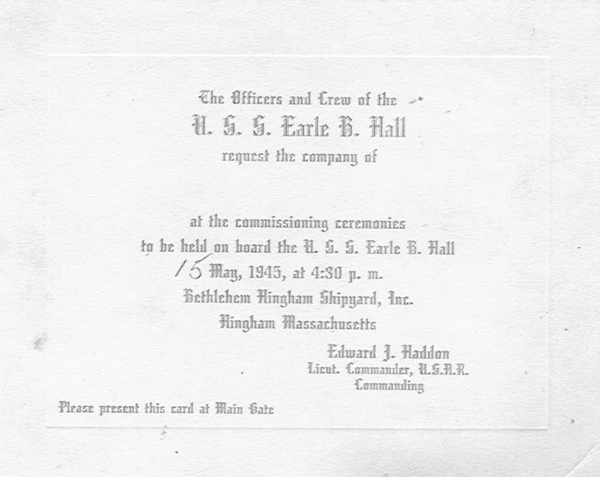Posts Tagged ‘KIA’


This blog post is one in a series on a recent tour to the Ardennes which gave Museum volunteers and staff an in-depth look into the scenes of the Battle of the Bulge, Hitler’s last desperate attempt to stop the Allied drive in western Europe in the cold winter months of December 1944 and January 1945.
During the tour, we visited two of the American cemeteries maintained by the American Battle Monuments Commission, which became the final resting place for thousands of American combatants who lost their lives in the Battle of the Bulge. One of the largest and costliest battles the US Army would fight, the Battle of the Bulge resulted in 67,000 American casualties.
At Luxembourg American Cemetery, we visited the grave of General George Patton, laid a wreath in the chapel to honor all of those buried there, and paid tribute to one particular serviceman, Wendell Wiley Wolfenbarger, known to us previously only through the material held in the Museum’s archives. Wolfenbarger was a husband, father, and postal employee from Neosho, Missouri.
-
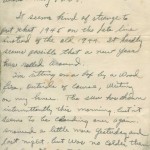
-
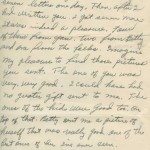
-
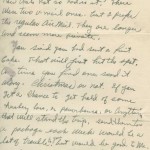
-
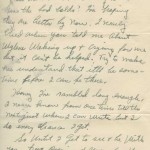
-
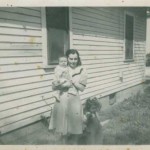
-
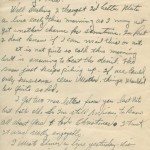
-
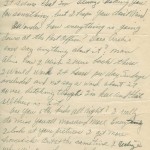
-
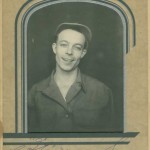
-
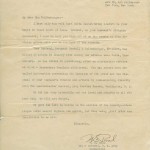
-
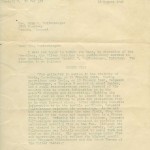
-
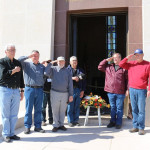
- Photo courtesy Alan Raphael
-
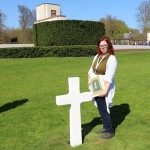
- Photo courtesy Alan Raphael
On January 1, 1945 Wendell wrote to his wife, “I still can’t say where I am , but I guess that as long as I’m not in the good old United States it doesn’t make any difference…I nearly cried when you told me about Wylene waking up & crying for me, but it can’t be helped. Try to make her understand that it’ll be sometime before I can be there.”
Three days later, on January 4, 1945, Wendell wrote;
“I wonder how everything is going down at the post office? Does Archie ever say anything about it? Man alive, how I wish I were back there. I would work 24 hours per day, Sundays included and not say a word about it, no use bitching about it though, I’m here and that’s all there is to it.
Are you & the kids all right? I really do miss you all more and more. Everytime I look at your pictures I get more homesick. But at the same time I realize why we’re here and know the job musr be done. All my love to you & the kids. Darling, keep praying. Love, Wiley”
Wolfenbarger was killed in action on January 18, 1945 near Berle, Luxembourg. He served with the 26th Infantry Division. He left behind a wife, Ruby and two small children. The collection was donated to the Museum in 2012 in Memory of Ruby May Barlow Wolfenbarger.
For more information about the tours offered by the Museum, see The National WWII Museum Tours.Stay tuned for more in the series on the April tour of Museum staff and volunteers to the Ardennes region.
Post by Curator Kimberly Guise.



As the Collections Manager at The National WWII Museum, I am allowed the privilege of interacting with collection donors, often WWII veterans and their families. This is one of my favorite parts of the job. These collections almost always come to us with a story. Here is one story that I’d like to share.
In 1944, Ann Lehman was eight years old when her brother Alfred enlisted in the Army and shipped off for Europe along with his friend Marvin Harman. Ann’s mother Henrietta was a widow that worked hard to take care of her family in Forest Hills, Queens, New York.
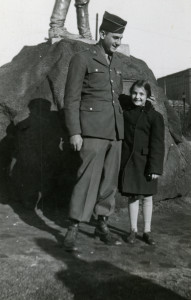
Alfred and Ann Lehman in Providence, Rhode Island, Thanksgiving 1944. Gift in Memory of Alfred Lehman, 2013.342
After Alfred’s death in 2006, Ann donated her brother’s wartime scrapbook to the Museum. The scrapbook tells the story of Alfred’s journey through Europe with Company K of the Army’s 319th Infantry Regiment, 80th Infantry Division. Alfred saw fierce action during the Battle of the Bulge and after the war returned home to his family in New York. She included a few additional family photos taken just prior to her brother shipping out as well as one showing a proud Ruth Harman with her smiling 18-year-old son on the stoop of their Brooklyn home. Ann told me that Marvin was killed during the war and she wanted to include a picture of him so that he might be remembered. She didn’t know what had happened to her friend, as Marvin’s mother, also a widow, had become distant from Ann and her family after being notified of her son’s death. Ann had heard that Marvin was buried somewhere in Holland but was unsure about the details. She worried that her single photo of Marvin might be all that was left of him. Ann recounted:
“I remember when I was about eight years old in camp, Marvin, my brother and I were standing near the lake. Marvin spoke to me with such sweetness and warmth that made him so different than most of the people I knew.”
While researching Marvin’s service, I was able to locate his grave at the American Cemetery at Margraten in the Netherlands. Marvin enlisted in New York on September 23rd 1943 and served with the 311th Infantry Regiment, 78th Division. He was killed in action on January 31st of 1945 during the final battle of Kesternich, Germany, 20 miles from Aachen. Marvin was posthumously awarded the Purple Heart. I passed this information on to Ann and hoped it might offer her some closure and solace. I contacted the cemetery and discovered that Marvin’s grave had been adopted and maintained since 1946. Marvin had definitely not been forgotten.
After emails on Ann’s behalf with the grave adoption agency in Holland, I put Ann in touch with the family maintaining her friend’s grave. She wrote to them:
“I would like to thank you for looking after a most wonderful boy’s grave. My oldest brother Alfred Lehman was a friend of Marvin’s, we all went to the same summer camp. Marvin was Ruth Harman’s only child and she had lost her husband.
In January 1945 I was almost nine years old. I can tell you this about Marvin, whoever knew Marvin loved him, including me. Over the years I have met people that knew him and they expressed the same feelings. He was a very special person and [his death was] a great loss to all that knew him. Nineteen years old was too young to die. May god bless you for what you are doing.”
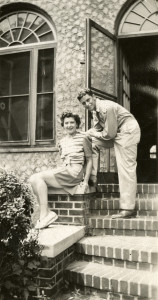
Ruth Harman with her son Private Marvin Harman in Brooklyn, New York in Summer 1944. Gift in Memory of Marvin Harman, 2013.342.
Ann received the following response from the family looking after Marvin’s grave:
“I want to thank you for the time you took to search for the grave of Marvin, and me. . . .I can tell you that I adopted Marvin’s grave eight years ago but I was not the first. There was another woman in Maastricht who had adopted it in 1946. The woman in Maastricht who adopted the grave had lost her husband in a camp in Germany. Did Marvin’s mother ever have a chance to visit the grave of her son? I bring flowers to Marvin’s grave 3 or 4 times a year with my husband and our 2 sons. Sometimes there lies a white rose. I suppose that someone from the family in Maastricht still comes and visits him also. Whenever we visit Marvin’s grave at the cemetery we see all of those boys’ names on so many graves, it is difficult for my eyes to stay dry.”
Ann provided the family with the picture of Marvin, who until this time, had only been represented to them by a stone marker in the cemetery:
“I am so moved with this picture of Marvin and his mother. He was exactly as you described him…a beautiful boy! You can see from his face that he was a very kind person. His mother is so young and pretty. It must have been so painful for her to receive the awful news about her son. She seems so happy in this picture.”
Last year Ann paid a visit to her old friend Marvin in Holland and she made a few new acquaintances, Marjo and Winny Habets and their sons, the caretakers of Marvin’s grave. Ann keeps in touch with the Habets on a weekly basis and they have become close friends. Their conversations often, but not always, touch on Marvin. She is contemplating another visit to Margraten in May of this year.
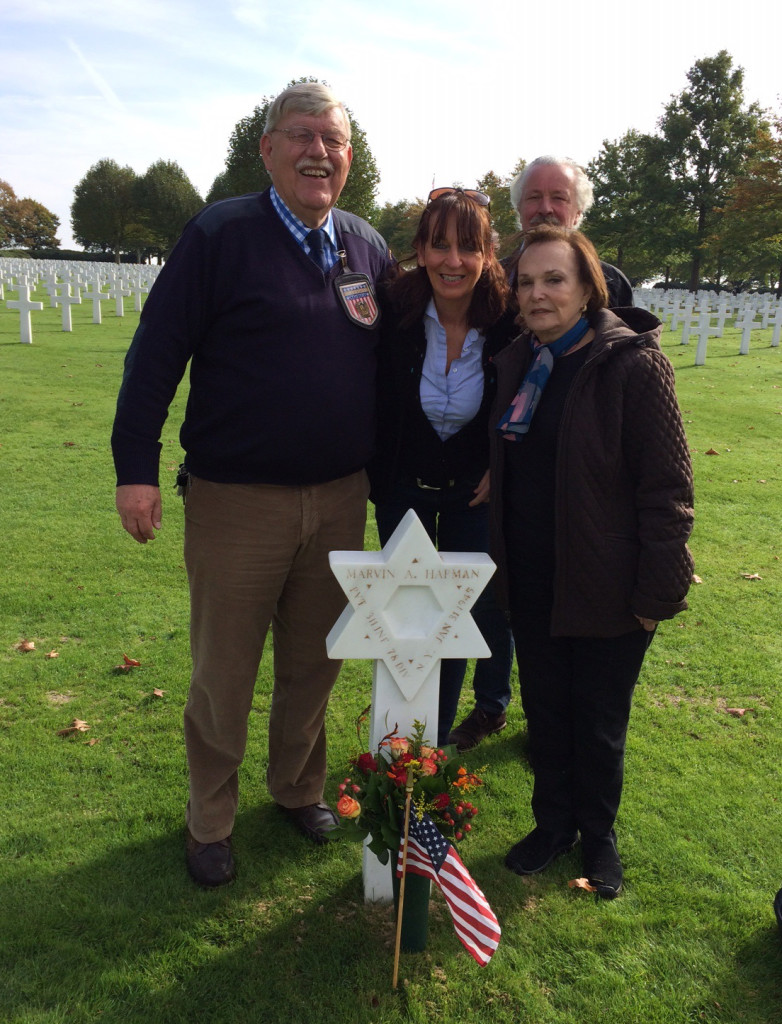
(From left to right), Margraten Cemetery staff member Cecil Buis, Marjo Habets, Winny Habets, and Ann Lehman Brownstein at The Netherlands American Cemetery at Margraten in 2014. Photo courtesy of Ann Lehman Brownstein.
Learn more about the Foundation for Adopting Graves at the American Cemetery in Margraten (Stichting Adoptie Graven Amerikaanse Begraafplaats Margraten) and the Netherlands American Cemetery.
Posted by Lowell Bassett, Collections Manager at The National WWII Museum.



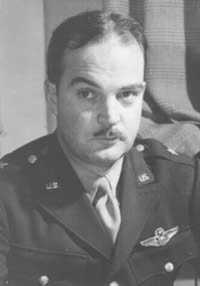
The great grandson of the Confederate Lieutenant General Nathan Bedford Forrest, General Nathan Bedford Forrest III was killed in action when he went down with his B-17 over Germany. He reportedly stayed behind the controls until the last of the crew was able to evacuate, but was not able to get out before the plane exploded. Sadly, all but one crew member perished in the water before rescue. He was posthumously awarded the Distinguished Flying Cross.
Forrest was the last of the family line and had no children. Sources list him as the first American General killed in action in the war in Europe.
Source: The Arlington National Cemetery website
In the same bombing mission over Kiel, at least 22 American aircraft in the US 8th Air Force were brought down (2,194 Days of War).



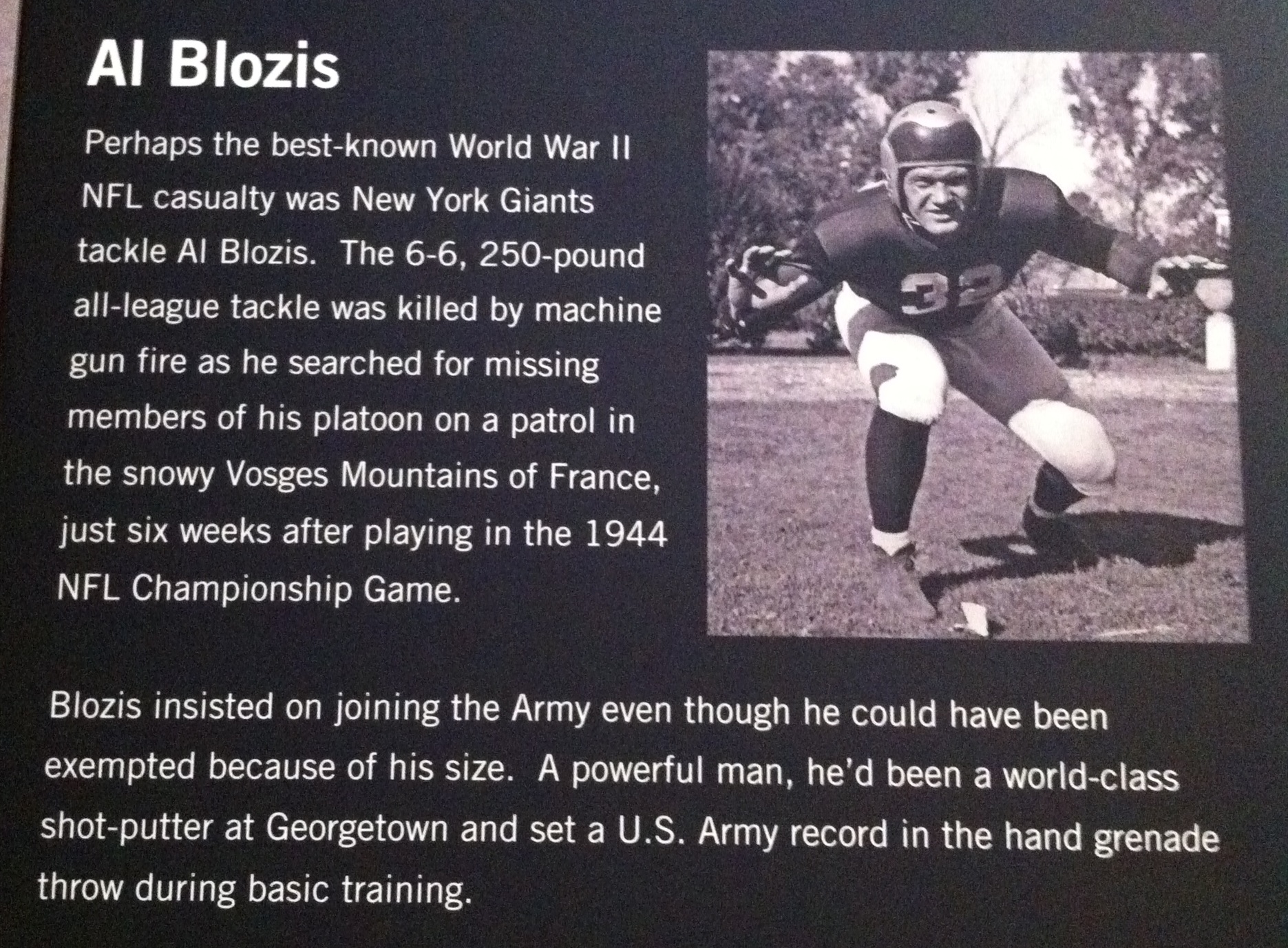
World War II claimed the lives of 23 NFL men – 21 active or former players, an ex-head coach and a team executive. Listed below are the NFL personnel killed during the war.
Cpl. Mike Basca (HB, Philadelphia, 1941) – Killed in France 1944
Lt. Charlie Behan (E, Detroit, 1942) – Killed on Okinawa, 1945
Maj. Keith Birlem (E, Cardinals-Washington, 1939) – Killed trying to land a combat-damaged bomber in England, 1943
Lt. Al Blozis (T, Giants, 1942-1944) – Killed in France
Lt. Chuck Braidwood (e, Portsmouth-Cleveland-Cardinals-Cinncinati, 1930-1933) – Member of the Red Cross. Killed in the South Pacific, 1944
Lt. Young Bussey (QB, Bears, 1940-1941) – Killed in the Philippines landing assault, 1944
Lt. Jack Chevigney (Coach, Cardinals, 1932) – Killed on Iwo Jima, 1945
Capt. Ed Doyle (E, Frankford-Pottsville, 1924-1925) – Killed during North Africa invasion, 1942
Lt. Col. Grasst Hinton (B, Staten Island, 1932) – Killed in a plane crash in the East Indies, 1944
Capt. Smiley Johnson (G, Green Bay, 1940-1941) – Killed on Iwo Jima, 1945
Lt. Eddie Kahn (G, Boston/Washington, 1935-1937) – Died from wounds suffered during Leyte invasion, 1945
Sgt Alex Ketzko (T, Detroit, 1943) – Killed in France, 1944
Capt. Lee Kizzire (FB, Detroit, 1937) – Shot down near New Guinea, 1943
Lt. Jack Lummus (E, Giants, 1941) – Killed on Iwo Jima, 1945
Bob Mackert (T, Rochester Jeffersons, 1925)
Frank Maher (B, Pittsburgh-Cleveland Rams, 1941)
Pvt. Jim Mooney (E-G-FB, Newark-Brooklyn-Cincinnati-St. Louis-Cardinals, 1930-1937) – Killed by sniper in France, 1944
Lt. John O’Keefe (Front office, Philadelphia) – Killed flying a patrol mission in Panama Canal Zone
Chief Spec. Gus Sonnenberg (B, Buffalo-Columbus-Detroit-Providence, 1923-1928, 1930) – Died of war-related illness at Bethesda Naval Hospital, 1944
Lt. Len Supulski (E, Philadelphia, 1942) – Killed in plane crash in Nebraska, 1944
Lt. Don Wemple (E, Brooklyn, 1941) – Killed in a plane crash in India, 1944
Lt. Chet Wetterlund (HB, Cardinals-Detroit, 1942) – Killed in plane crash off New Jersey coast, 1944
Capt. Waddy Young (E, Brooklyn, 1939-1940) – Killed in a plane crash following first B-29 raid on Tokyo, 1945
All information courtesy of the Pro-Football Hall of Fame.

On display through May 5, Gridiron Glory: The Best of the Pro Football Hall of Fame presents a panoramic view of the story of professional football — from its humble beginnings in the late 19th century to the cultural phenomenon it is today — and brings together an extraordinary collection of artifacts, while creating an unforgettable interactive experience. The Hall of Fame has partnered with NFL Films in creating the audio and video for this exhibit.
The exhibition — a cornerstone event in the multi-year celebration of the Hall of Fame’s 50th anniversary — is the most extensive and comprehensive exhibition featuring America’s most popular sport ever to tour.
In addition to an exclusive display of WWII-era NFL artifacts, this exhibition of Gridiron Glory also includes historic items related to the New Orleans Saints.



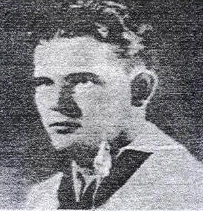
Today in 1941, Earle Boitnott Hall, Aviation Machinist’s Mate, Second Class, was KIA in the Philippines – four days after his 22nd birthday.
The USS Earle B. Hall (APD-107) was comissioned in his honor on May 15, 1945.
Citation for the posthumous awarding of the Air Medal for Earle Boitnott Hall:
“For meritorious achievement while participating in aerial flight as a member of a Patrol Plane crew during action against enemy Japanese forces at the Island of Jolo, Sulu, Philippine Islands, December 27, 1941. Taking part in a vigorous and aggressive attack on Japanese naval forces and shore installations.
Hall, although severely wounded, persisted in the performance of his duty and, by his courage and skill under fire, contributed materially to the success of this operation. He gallantly gave up his life in the service of his country.”
Learn more about the USS Earle Boitnott Hall.
Images courtesy of www.earlebhall.com.
